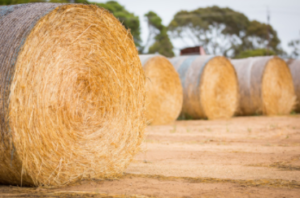If you’re making silage, you need to choose the right silage film to protect your crop. There are several different types, each with varying qualities. The material you choose should reflect heat well and protect the silage bales from adverse conditions. There are also many factors to consider when choosing the right silage film, including the type of equipment you use to make silage.
 Various silage film types are available, which you can use to wrap your bales. Different types come with different features. These include Polyethylene, Multiple layers, and Eco-friendly and cost-effective options. Here are some tips to help you choose the best film for your needs. Choosing the suitable silage wrap is an essential part of the baling process.
Various silage film types are available, which you can use to wrap your bales. Different types come with different features. These include Polyethylene, Multiple layers, and Eco-friendly and cost-effective options. Here are some tips to help you choose the best film for your needs. Choosing the suitable silage wrap is an essential part of the baling process.
Polyethylene
Polyethylene SilageWrap silage film is available in two different colour options, white on the inside and black on the outside. Both offer excellent puncture and scuff resistance. Additionally, the film’s white surface reflects light on the plants and blocks light from reaching the ground, preventing weed growth and keeping the soil warm.
Both types of film are suitable for making silage, though both films are not interchangeable. Polyethylene is used at 60 to 90 %, and dicyclopentadiene hydrocarbon resin is used at three to 20 per cent. It is also used for producing a variety of agricultural products.
The film may be multi-layered, consisting of two outer layers and a core layer. The thickness of the core layer is typically 40-60% of the total film thickness. The outer layers are often between 15 and 35 miti thick.
Multiple layers
The best way to preserve silage is to use multiple layers of silage film. These film sheets are made to be dense and long-lasting. They also prevent environmental damage and spoilage. As a result, they preserve the nutrients in the silage. There are many factors to consider when choosing silage film.
The first step in choosing silage film is to understand how the film is made. There are many types of silage film with different specifications. For example, some silage films are made of blown film, while others are cast. Choosing a film with the correct gauge for your particular needs is essential regardless of the type.
Multiple layers of silage film reduce oxygen permeability, resulting in spoilage and mould. The number of layers needed depends on the crop type and moisture content. For example, four wrap layers may be adequate for a mature forage.
However, six layers can provide a better barrier and improve feed value. If you plan to use multiple layers, it is essential to wrap the silage as soon as possible after baling. Otherwise, it will expose the bale to excessive air, which could lead to spoilage, mould, or even combustion.
Eco-friendly
The SilageWrap silage film series is environmentally friendly for storing harvested crops. Its innovative design and efficient materials make it an excellent option for sustainable farming. RKW uses high-quality raw materials and selected recyclates to manufacture its films. The company’s commitment to sustainability and the environment has been evident in its product portfolio for many years.
The film is biodegradable, making it safe for the environment and fodder. However, many farmers are concerned about the chemical contamination caused by conventional silage raw materials. These chemicals may hurt the nutrients in fodder, resulting in health problems in livestock and premature miscarriage.
The film can be produced using ten different raw materials, each with unique characteristics. In addition to demonstrating excellent ensiling performance, it is also impervious to oxygen and water, preventing the silage’s fermentation.
Cost-effective
Silage film is a highly effective tool for farmers. It helps protect silage from spoilage and dryness. It also prevents it from getting too wet or too hot. Aside from this, it also reduces the amount of waste and spoilage. In addition, silage film protects crops from pests that can destroy crops.
The main problem with polyethylene films is that they don’t have good oxygen barrier properties. Solutions to this problem include increasing the thickness of the polyethylene film or laminating it with other materials. Moreover, these solutions are more expensive and require complicated manufacturing processes. For this reason, silage film should be thick enough to offer good oxygen barrier properties.